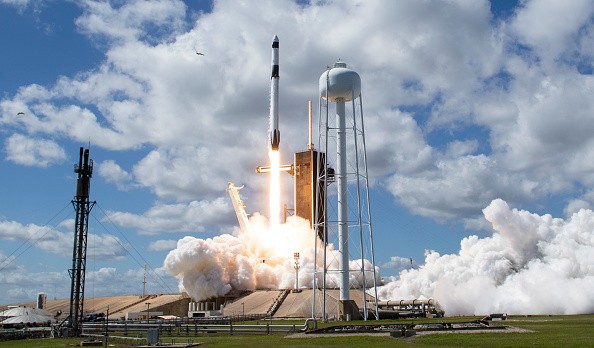National Aeronautics and Space Administration (NASA) and SpaceX Crew 5 started their mission. From the Cape Canaveral Space Force Station in Florida, the mission began its journey to the International Space Station.
Part of the initiatives of SpaceX Crew 5 is to perform experiments to unlock the potential of growing food in space. NASA reported that the launch was the sixth SpaceX flight with NASA astronauts.
According to NASA, the team consists of a mission commander and NASA astronauts Nicole Mann and Josh Cassada serving as pilots. In addition, part of the crew is Japan Aerospace Exploration Agency (JAXA) astronaut Koichi Wakata and Roscosmos cosmonaut Anna Kikina. NASA added that Mann, Cassada, and Kikina would be their first spacelight, while fifth for Wakata.
Furthermore, NASA said that the mission in the International Space Station would research areas of fluid behavior in microgravity, helping potential exploration in the low-Earth Orbit. Also, it will conduct scientific experiments in bioprinting and cardiovascular health.
NASA Kathryn Lueders explained that the international space station played a significant role in helping NASA and their partners better understand the microgravity environment. Lueders is also an associate administrator for NASA's Space Operations Mission Directorate in Washington.
On the other hand, NASA Administrator Bill Nelson said that the Crew 5 is proof of living in the commercial space exploration era. Partnerships ignited the initiative for discoveries and scientific ingenuity, noting that Crew 5 would perform scientific experiments.
Exploring deep space will offer a better understanding of the existence far from Earth and unlock discoveries that help future human explorations on other planets or the moon.
Meanwhile, AccuWeather noted that the space exploration partnership between the United States and Russia is until 2024. After the space explorations, Russia expressed interest in building its space station.
You can visit their website here to learn updates about NASA's space explorations and other projects.
Artemis 1 Spacecraft

Recently, Hurricane Ian caused the postponement of the Artemis Spacecraft launch because of the bad weather. The spacecraft could travel 280,000 miles from Earth and thousands of miles beyond the moon. The mission would be helpful for the deep-space commitment of NASA and its partners.
Moreover, September unveiled a rare view, with Jupiter showing the closest approach to Earth for the first time in 59 years. The best picture that stargazers saw was on September 26, 2022.
In the same month, NASA Perseverance Rover captured a rare photo of a cat-looking image of rock on Jezero Crater using the advanced mast-mounted camera from NASA. It became a trending photo and NASA's photo of the week.
Best sky view in October
Space and astronomy lovers can witness more exciting views from the International Space Station launch. October marked three rare majestic moments in the sky. Full Hunter's Moon will emerge in the sky in the first week (October 9). Then, the Orionid Meteor Shower will appear on October 20, 2022, and October 21, 2022. Ultimately, stargazers can see the eclipse on October 25, 2022, marking the start of the eclipse season.
Prepare your telescopes and eclipse glasses to see the best view of exciting astronomical events in the coming weeks.
Related Article: NASA Spots Breaks on Mars Curiosity Rover Wheels -- Will This Impede Data Gathering and Mission to Mars?
For more similar, don't forget to follow Nature World News.
© 2026 NatureWorldNews.com All rights reserved. Do not reproduce without permission.





